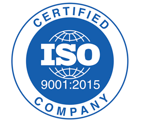For medical device companies, compliance with FDA regulations is not just a legal obligation—it is critical to ensuring patient safety, product quality, and business success. FDA inspections play a key role in verifying that companies meet regulatory requirements, and failure to comply can lead to serious consequences, including warning letters, product recalls, import bans, and even legal action.
Understanding what the FDA looks for during inspections and proactively addressing potential compliance gaps can help companies avoid findings that could put their products—and their reputation—at risk. This blog explores key strategies medical device companies should implement to prevent FDA inspection findings and the potential implications of noncompliance.
Key Strategies to Avoid FDA Inspection Findings
1. Implement and Maintain a Robust Quality Management System (QMS)
A well-structured Quality Management System (QMS) is the foundation of FDA compliance. Medical device companies must establish and maintain a QMS that meets 21 CFR Part 820 (Quality System Regulation, or QSR). This includes:
- Documented procedures for design controls, production processes, risk management, and post-market surveillance.
- Regular internal audits to identify potential compliance gaps before an FDA inspection.
- Comprehensive training programs for employees to ensure they understand quality and regulatory requirements.
- Effective supplier controls to ensure third-party vendors meet quality and regulatory standards.
Why it matters: An inadequate QMS is one of the most common reasons companies receive FDA Form 483 observations and warning letters. A strong QMS helps maintain consistency, improve product quality, and demonstrate compliance during inspections.
2. Ensure Proper Design Controls Are in Place
Medical device companies must follow FDA-mandated design control requirements to ensure that devices are safe and effective. The Design History File (DHF) should include:
- User needs and intended use documentation.
- Risk management reports to identify and mitigate potential hazards.
- Verification and validation (V&V) testing to ensure the device performs as intended.
- Design reviews and approvals throughout the development process.
Why it matters: If design controls are not properly documented, companies may receive FDA inspection findings that question the integrity and safety of their products.
3. Maintain Thorough Complaint Handling and CAPA Processes
The Corrective and Preventive Action (CAPA) system is essential for identifying and resolving quality issues before they escalate. Companies should:
- Investigate and document customer complaints thoroughly.
- Take corrective actions to address nonconformities and implement preventive measures.
- Monitor CAPA effectiveness through periodic reviews and trend analysis.
- Ensure CAPA procedures are consistently followed and updated.
Why it matters: Inadequate CAPA processes are one of the most frequently cited FDA violations. Poor complaint handling can lead to recurring product issues and regulatory scrutiny.
4. Conduct Regular Training and Ensure Employee Competency
Compliance is not just about policies—it requires a knowledgeable workforce. Companies must:
- Provide ongoing regulatory and quality training for employees at all levels.
- Maintain training records to demonstrate compliance.
- Ensure that employees understand their roles in quality and regulatory compliance.
Why it matters: If an FDA investigator finds that employees lack proper training, the company may face compliance risks and operational inefficiencies.
5. Stay Vigilant with Supplier and Vendor Management
Medical device companies often rely on third-party suppliers for components, materials, or contract manufacturing. To ensure compliance:
- Conduct supplier audits and maintain approved supplier lists.
- Establish supplier quality agreements to define regulatory expectations.
- Monitor supplier performance through regular assessments.
Why it matters: The FDA holds manufacturers responsible for the quality and compliance of their suppliers. Deficiencies in supplier controls can lead to product quality issues and regulatory action.
6. Conduct Mock FDA Inspections and Be Prepared
Regular mock inspections can help companies prepare for FDA audits by:
- Identifying gaps in documentation and compliance.
- Training employees on how to respond to FDA questions.
- Reviewing previous FDA inspection reports for industry trends.
- Ensuring that records, logs, and reports are readily available for review.
Why it matters: Companies that proactively prepare for inspections are more likely to have a smoother audit process and fewer compliance issues.
The Consequences of Noncompliance with FDA Regulations
Failing to meet FDA requirements can have serious business, legal, and financial implications. Some of the potential consequences include:
1. FDA Form 483 Observations
When an investigator identifies violations, they issue an FDA Form 483, detailing areas of noncompliance. Companies must respond in writing, outlining corrective actions.
Impact: If not addressed, a Form 483 can escalate into more serious enforcement actions.
2. Warning Letters
If issues are not resolved after a Form 483, the FDA may issue a Warning Letter, which is a public notice that the company is violating regulations.
Impact: Warning letters damage a company’s reputation, can lead to lost business, and often trigger additional FDA scrutiny.
3. Product Recalls
If a medical device is found to be unsafe or defective, the company may need to initiate a recall—voluntarily or by FDA mandate.
Impact: Recalls can result in financial losses, regulatory fines, and potential lawsuits from affected patients.
4. Import Alerts and Product Seizures
The FDA can place noncompliant companies on an import alert, preventing their products from entering the U.S. market. In extreme cases, the FDA may seize products.
Impact: Import restrictions disrupt supply chains, lead to revenue losses, and can force a company to shut down operations.
5. Civil and Criminal Penalties
In severe cases, regulatory violations can result in civil fines or even criminal charges against company executives.
Impact: Legal consequences can include multimillion-dollar fines, legal battles, and, in extreme cases, imprisonment of responsible individuals.
Conclusion: Compliance Is Key to Long-Term Success
Avoiding FDA inspection findings requires a proactive approach to compliance. By maintaining a strong QMS, implementing rigorous design controls, strengthening CAPA processes, and ensuring robust supplier management, medical device companies can mitigate regulatory risks and safeguard their operations.
Compliance is not just about passing an inspection—it’s about protecting patients, preserving brand integrity, and ensuring long-term business success. Investing in regulatory excellence today can prevent costly consequences in the future.
Would you like additional insights or guidance on preparing for FDA inspections? Let’s discuss how PRP Compliance can support your regulatory and quality initiatives!



